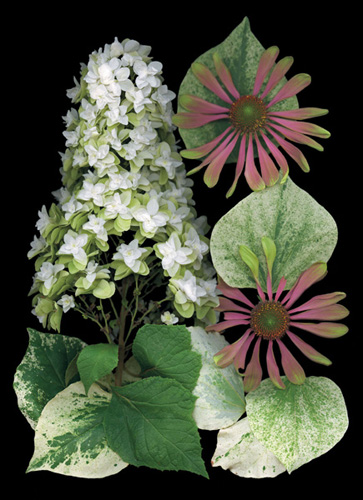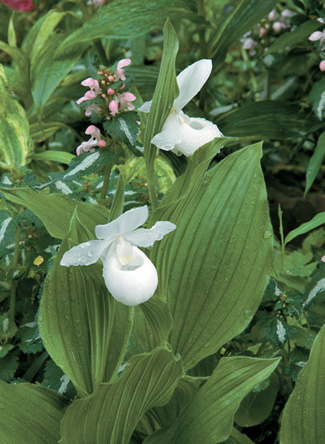
When scores of plants grow from seeds, a random and interesting anomaly may appear. For instance, a green-tipped purple, daisy-like flower of the species Echincaea purpurea appeared as an odd offspring. Gardener Mark Veeder vegetatively propagated the plant and introduced it to horticulture. The cultivated variety, or cultivar (cv.), was named ‘Green Envy’. Similar things occurred in finding the double-flowered Hydrangea quercifolia ‘Snowflake’ and the variegated redbud Cercis canadensis ‘Silver Cloud’.

A cultivated variety, or cultivar (cv.), is a version of a species that someone has discovered, propagated, and put into production. The variety may be found by accident—when something special just happens to pop up in the garden—or intentionally by looking at a lot of plants from a mass sowing to see if there is one with a quirk worth noting, like variegated leaves or double flowers. Dan Heims of Terra Nova Nurseries, who has introduced more than 600 cultivars, says he often roams the benches of growers looking at thousands of individual plants hoping to discover a “sport”— a mutation that makes a plant unique. The cultivar name follows the standard binomial of genus and species, begins with capital letters, and is placed in single quotes, for example, Echinacea purpurea ‘Green Envy’, discovered by and in the garden of amateur Mark Veeder.
Cultivar names are not supposed to be Latinized. For example, Cercis canadensis ‘Silver Cloud’ has a modern name, while C. c. ‘Alba’ with its white flowers has an old-fashioned identifier: alba is Latin for white. It has also gone out of style to name a plant after a person, for instance, the hybrid Clematis ‘Betty Corning’. (Naming a plant after a living person is still done, but if you’re thinking of doing so, be sure to get permission, or just name the discovery after yourself or your favorite garden writer!)
The current trend is to use descriptive “fancy names.” I’ll make one up: a cultivar with pointed, compact red flower buds could be called ‘Lil’ Lipstick’.
Growers who discover a new variety and hope to make money on its introduction often apply for a patent. A patented plant is protected and cannot be legally propagated until the patent expires. There are companies that apply a trademark name to a plant after securing permission from the patent holder. The idea is to have the public associate the plant with the trademarked name, so that they will still ask for it by this registered name after the patent expires. In other situations, a trademark name is applied to a cultivar that has not been patented and may be propagated by anyone. If the name catches on, the plant can be mass-produced and the price increased. Whether this is legal or not, it seems a bit dodgy to me.
The bottom line: Become a “sport fisherman” like Heims, and look for happy accidents.
A white selection of the North American hardy terrestrial showy lady’s slipper orchid Cypripedium reginae var. albolabium.
